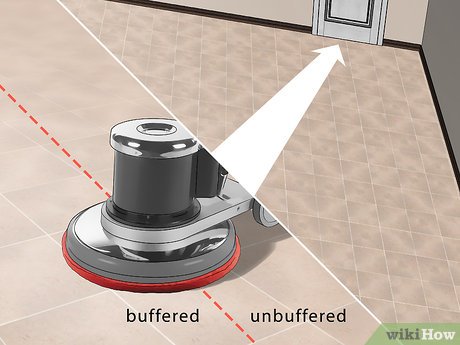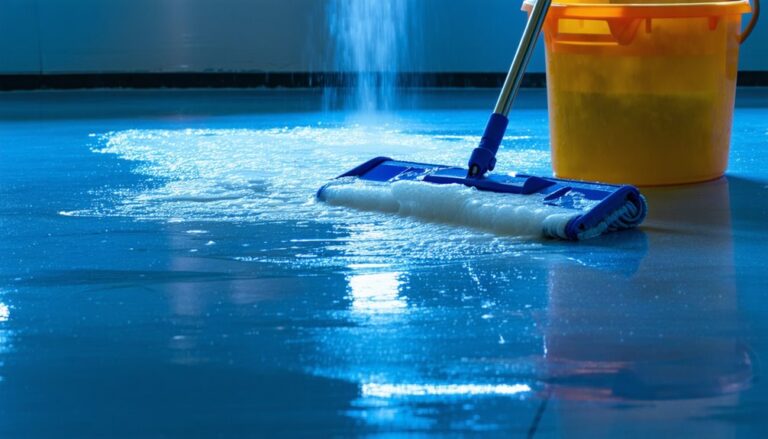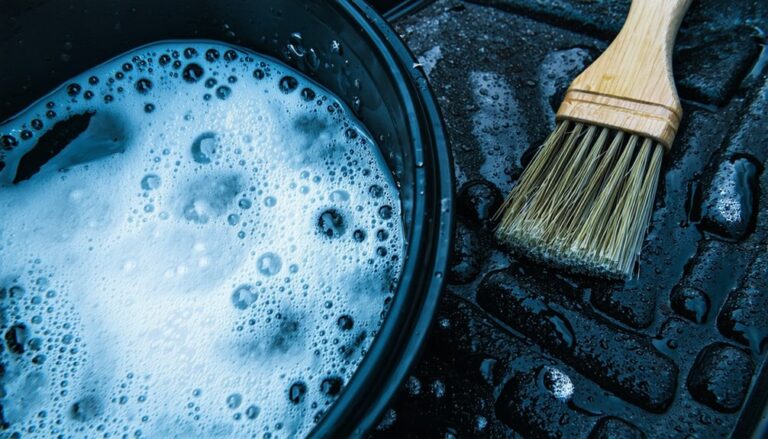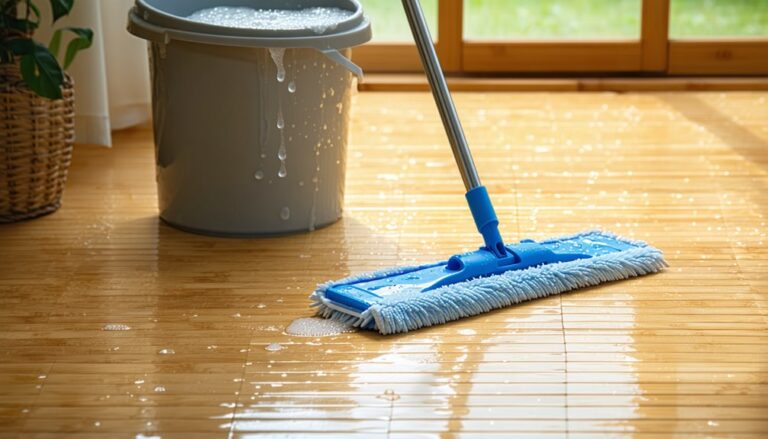Ever looked at your floors and wished they had the same shine and gloss as the day they were installed? You’re not alone.
Floors can lose their luster over time, making your space look dull and worn out. But what if you could bring them back to life with just a little effort? Imagine the satisfaction of walking into a room where the floor gleams under the light, catching the eye of anyone who enters.
Buffing your floor might sound like a task best left to professionals, but it’s surprisingly something you can handle yourself with the right guidance. By the end of this guide, you’ll know exactly how to buff your floors to perfection, transforming your home into a brighter, more inviting space. Ready to unlock the secret to stunning floors? Let’s get started.

Choosing The Right Equipment
Floor buffers come in many types. Electric buffers are popular. They are easy to use. Battery-powered buffers do not need cords. They are good for large areas. High-speed buffers work fast. They give a shiny finish. Choose the type that fits your needs.
Pads are important for buffing. White pads are soft. They are for light cleaning. Red pads are for regular cleaning. They remove light marks. Black pads are strong. They can remove tough stains. Always pick the right pad for your floor. It keeps your floor safe and clean.

Preparing The Floor
Start by cleaning the surface thoroughly. Remove all dust and debris for a smooth finish. This ensures an even buffing process, enhancing the floor’s shine and longevity. Proper preparation is key to achieving professional results.
Clearing The Area
Remove all items from the floor. This includes furniture, rugs, and other objects. Make sure the space is clear. This helps keep the floor safe for buffing. 安全性 is important. You do not want to trip or fall.
Cleaning And Dusting
Start with a broom or vacuum. Clean the floor well. Remove all dust and dirt. Dirt can scratch the floor. Use a damp mop for sticky spots. Allow the floor to dry completely. A clean floor is ready for buffing.
Applying Floor Polish
Selecting the best polish is crucial for a shiny floor. Different floors need different types of polish. Wooden floors often need a wax-based polish. Tile floors usually work well with water-based polish. Always check the label. It should match your floor type.
Start by cleaning the floor. Use a mop or a vacuum. Make sure the floor is dry before you start. Pour a small amount of polish onto the floor. Use a soft cloth or a mop to spread it. Move in small circles for an even coat. Allow the polish to dry. It might take a few hours. Avoid walking on the floor until it’s dry.

Buffing Techniques
Buffing a floor enhances its shine and durability. Begin by cleaning the surface thoroughly to remove dirt. Use a buffing machine with the right pad and solution, moving in straight lines for an even finish. Regular maintenance preserves the floor’s appearance and extends its lifespan.
Operating The Buffer Safely
Safety is very important when using a floor buffer. Keep your hands and feet clear of the buffer. Make sure to wear safety goggles. Always use the buffer handle firmly with both hands. Ensure the cord is secure to avoid tripping. Keep the buffer on a flat surface. Avoid tilting or lifting the machine.
Effective Buffing Patterns
Buff in straight lines for best results. Overlap each pass slightly. Move slowly for even shine. Avoid quick movements. Change directions to prevent streaks. Buff from one wall to another. Use gentle pressure with the machine. Repeat until the floor shines bright.
Handling Different Floor Types
Wood floors need gentle care. Use a soft cloth to buff. 刺激の強い化学物質を避ける. They can damage the wood. Apply wax for a shiny look. Buff in circular motions. Work slowly for best results. Check for scratches before starting. Remove dust first. Use floor polish for extra shine.
Tiles are easy to buff. Use a clean cloth. Choose a mild cleaner. Avoid using bleach. It can stain tiles. Buff in circles for a smooth finish. Rinse with water after buffing. Dry with a towel. Check for grout stains. Clean them before buffing. Use a buffer for large areas.
Vinyl is simple to maintain. Use a damp mop. Avoid soaking the floor. Water can seep in. Use a special cleaner for vinyl. Buff gently with a cloth. Laminate needs care. Avoid too much water. Buff with a microfiber cloth. Check for damages before you start. Use laminate polish for shine.
一般的な問題のトラブルシューティング
Streaks can make a floor look messy. Use clean mop heads to avoid them. Dirty mops leave streaks. Change water often while cleaning. Dirty water can cause streaks too. Dry the floor properly after mopping. This helps in reducing streaks. A clean, dry cloth can help. Buffing in small sections is also helpful. It gives better control over the mop. Watch your movements. Move the mop in straight lines. This helps avoid streaks.
Uneven shine can happen easily. Check the buffing pads for dirt. Dirty pads make the shine uneven. Replace old pads with new ones for better shine. Apply even pressure while buffing. This helps distribute the shine. Work in small areas for best results. Overlapping strokes can also help. They ensure no spot is missed. Buff in a steady motion. This makes the shine look even.
Maintenance And Care
Clean equipment after every use. This stops dirt from building up. Use a soft cloth for wiping. Keep wires neat and untangled. Store machines in a dry place. Wet areas can rust the parts. Always check for damaged cables. Safety first! Regular care keeps machines working longer.
Dust the floor often. This keeps it shiny. Use a mop for quick cleaning. Avoid 強力な化学物質. They can hurt the floor. Use pads that are soft and clean. Check for any floor damage. Fix small issues fast. This stops bigger problems.
よくある質問
What Tools Are Needed To Buff A Floor?
To buff a floor, you’ll need a floor buffer machine, buffing pads, and a cleaning solution. Ensure the buffer machine is suitable for your floor type. Buffing pads come in various grades; choose one based on your floor’s finish. A quality cleaning solution enhances the buffing process and results.
How Often Should You Buff Floors?
Buff floors every few months depending on traffic and wear. High-traffic areas might need more frequent buffing. Regular buffing maintains shine and extends the floor’s lifespan. Assess your floor’s condition periodically to determine the optimal buffing schedule for your needs.
Can Any Floor Be Buffed?
Most floors can be buffed, including wood, tile, and vinyl. However, some delicate surfaces may require special care. Always check the manufacturer’s guidelines for your 床材 type. Certain floors might need specific pads or solutions to avoid damage during the buffing process.
What’s The Difference Between Buffing And Polishing?
Buffing restores a floor’s shine and smoothness by removing scratches and scuffs. Polishing applies a protective layer to enhance gloss. While buffing removes imperfections, polishing focuses on adding shine. Both processes complement each other, ensuring your floor looks its best.
結論
Buffing a floor brings back its shine. Simple steps make it easy. Gather your materials: buffer, pads, and cleaner. Start with a clean floor. Use the buffer in small sections. Smooth, steady motions work best. Finish by wiping away dust.
Regular buffing keeps floors looking new. It’s a straightforward task. Great for maintaining your home. Anyone can do it with practice. Try it today and see the results. Your floors will thank you. Clean, shiny, and beautiful. Enjoy the transformation.
Make it a part of your cleaning routine. A small effort makes a big difference.




